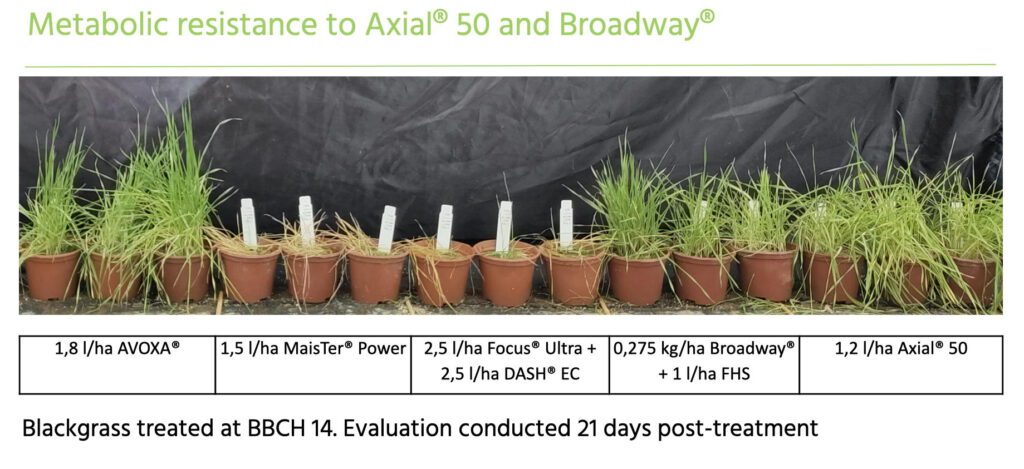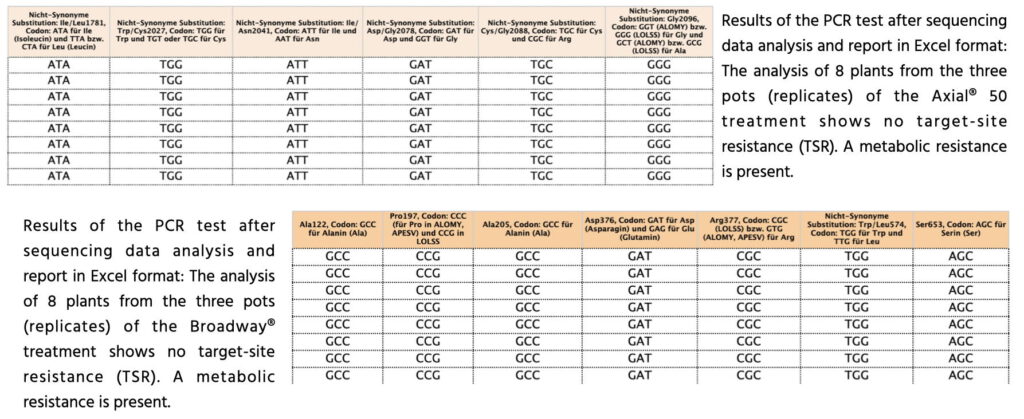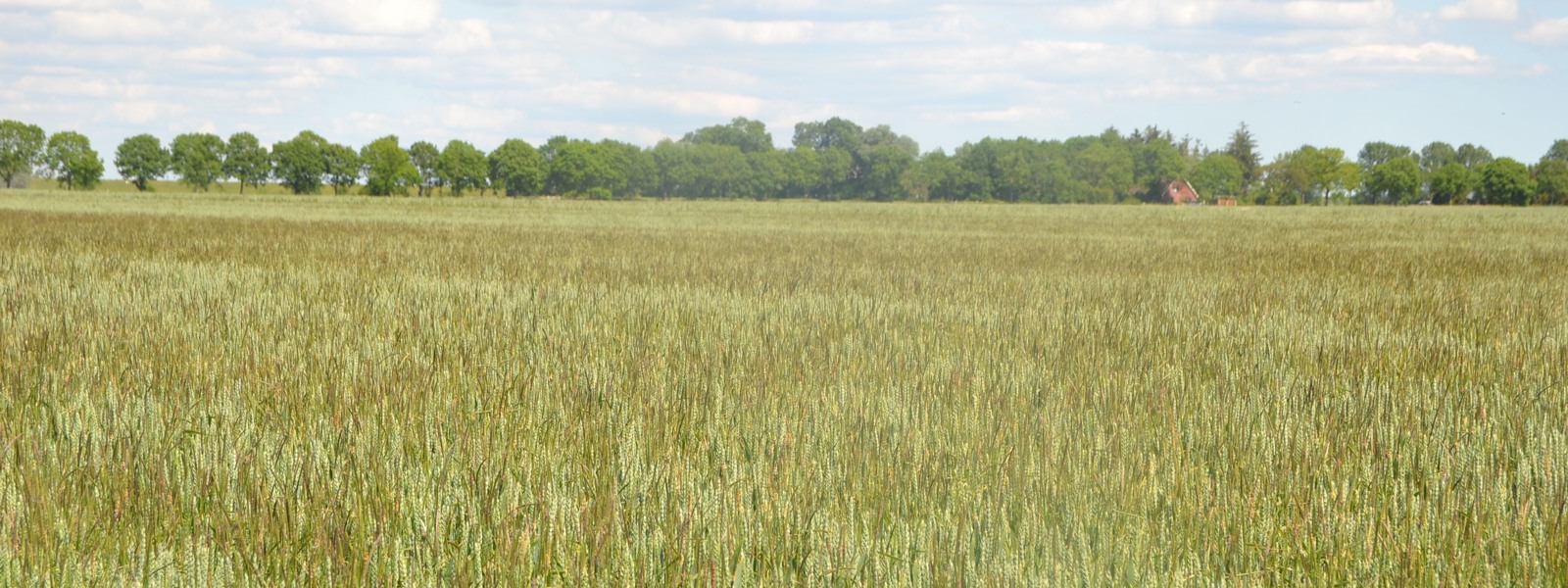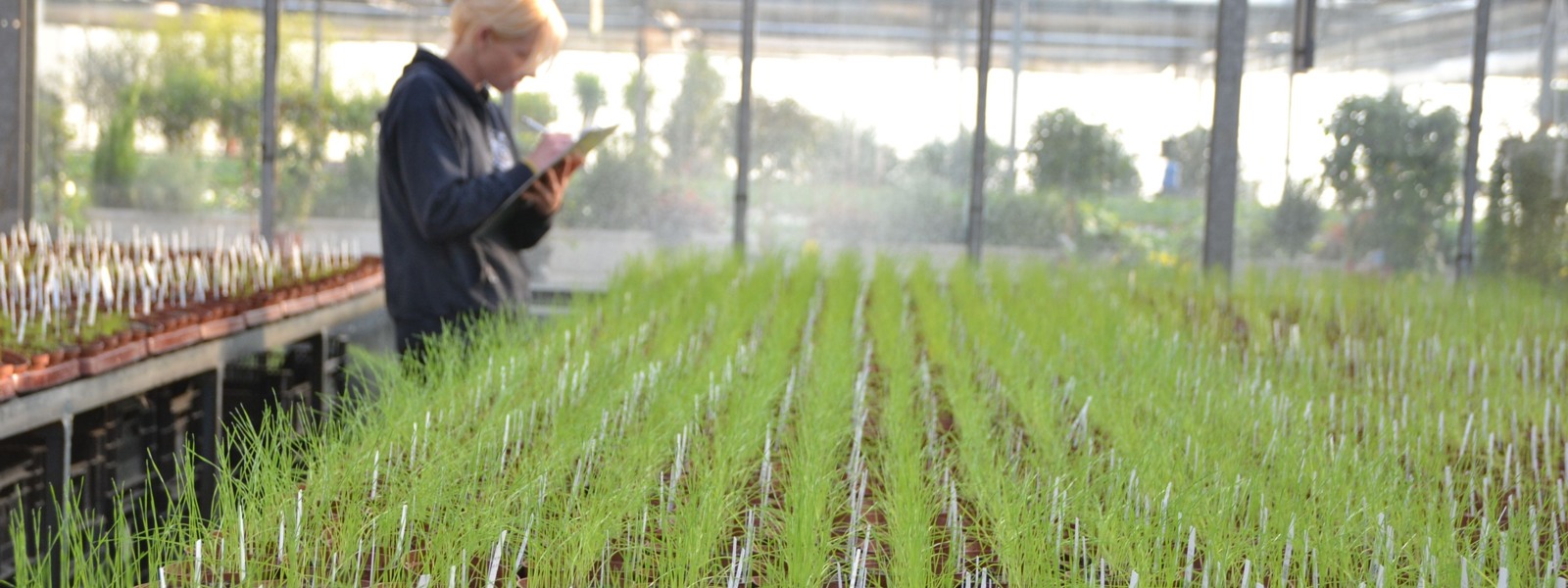Case 2: Metabolic Resistance (NTSR, Non-Target Site Resistance) to Pinoxaden (Axial® 50) and Pyroxsulam (Broadway®)
The biotype is resistant to Axial® 50, Broadway®, and AVOXA®. The PCR analysis shows no mutations in both target genes (ACCase and ALS) – all plants show the wild-type.
Typical for this metabolic resistance: Cycloxydim (Focus® Ultra) and MaisTer® Power still work effectively.


Consequences:
Post-emergence options are lacking not only in barley but increasingly in other cereals as well. The question arises: Are other active ingredients also affected in post-emergence? For example, how does Traxos® still perform? And what residual effects do Mesosulfuron- or Propoxycarbazon-containing products show?
Compared to Case 1, the available flexibility is already significantly reduced here – with immediate consequences for herbicide strategy planning in cereals.
What remains: Loosening crop rotation, utilizing agronomic adjustments. The situation is still manageable, but it requires strategic action.
Important: The only effective herbicides left for post-emergence are the strong products Focus® Ultra, Select® 240 EC, and MaisTer® Power. These must be used in broadleaf crops – and alternated to avoid further selection of site resistance.






